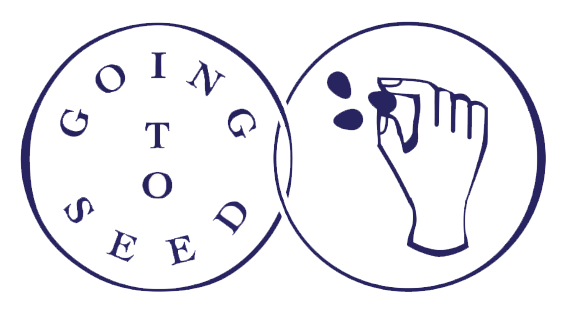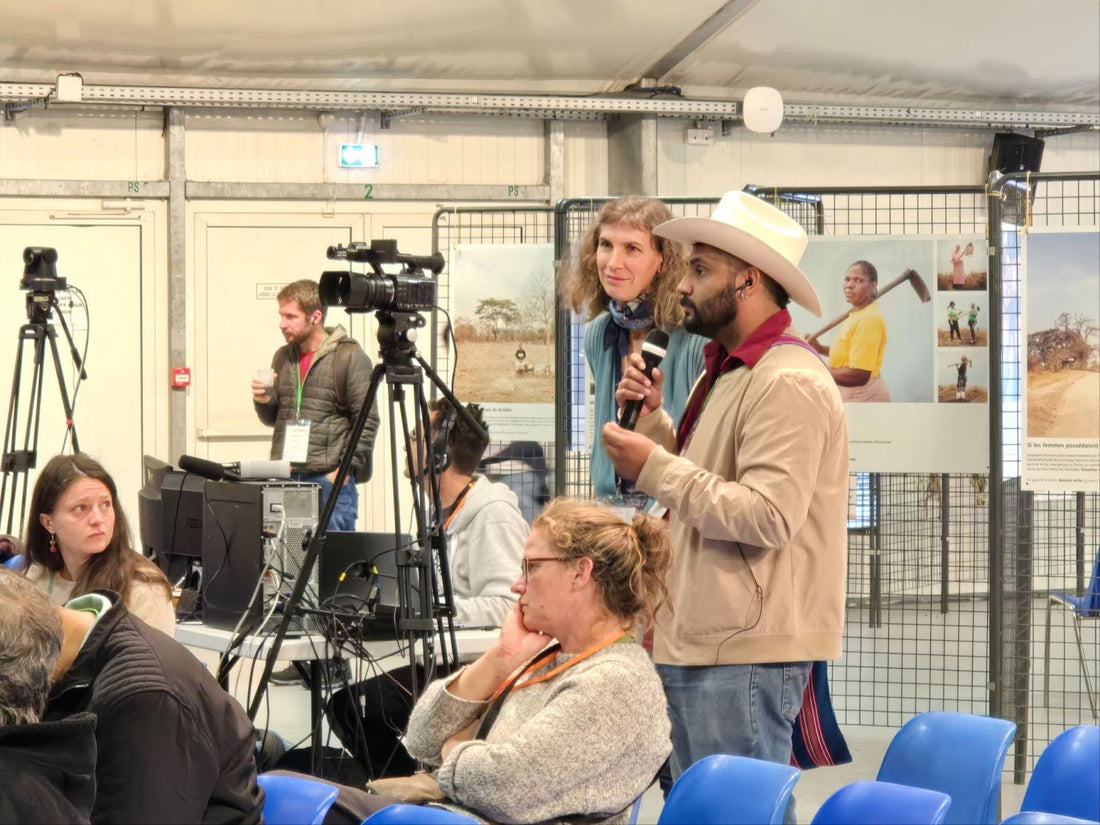This blog is adapted from a conversation between Rodrigo and Julia Dakin recorded at the International Farmer Seed Conference in Antibes, France in 2024.
My name is Rodrigo, and I'm originally from central Mexico, specifically from the city of Aguascalientes in the Bajío region. However, I currently work in Chiapas, in the South of Mexico, with Indigenous communities. I work with an organization called DESMI, which stands for Economic and Social Development of Indigenous Mexicans. DESMI has been in operation since 1969, addressing various issues; however, since the 1990s, we’ve focused more on agroecology, as it became a pressing need in Chiapas.
I am a biologist by academic training, but I learned agroecology through my work with rural communities. The knowledge I have now is a result of working directly with these communities. I help coordinate a team that works with the indigenous peoples in Chiapas. We visit the communities and assist them in improving their production. Our focus is not on making these communities large-scale producers who sell to the market. Rather, our goal is to help them achieve food sovereignty. It’s about ensuring they have enough food for themselves so they can make independent decisions. When your basic food needs are not met, it’s challenging to focus on organizing or thinking long-term. You're always dependent on something or someone else.
We work with peasants, not "producers." For us, there's a significant difference. A producer believes they produce, that they control production, but in reality, it’s the land that produces. A producer grows crops to sell, while a peasant works with Mother Earth to feed themselves and their family. Food is for their survival, not primarily for selling. The communities we work with cultivate a variety of crops, including corn, beans, vegetables, fruit trees, and coffee. They are indigenous peoples of Mayan origin.
During a conversation a few days ago, we were discussing seed diversity and the importance of respecting Indigenous knowledge. The people we work with have been managing seeds for thousands of years, but their wisdom is often unrecognized and undervalued. For example, many of the farmers we work with exchange different varieties of corn seeds. When they exchange them, they say, "Plant this. It might not look great the first time, but plant it again, and it will adapt."
This is how they help the seeds acclimate to new conditions. Corn seeds can move from tropical coastal areas to cooler, mountainous regions, and over time, they adapt to the new climate. They also share seeds by saying, "This is from a cold climate. Maybe if you mix it with your warm-weather variety, you’ll get a good result."
When it comes to selecting seeds, they don't just pick the largest or prettiest ones. They also select seeds that grow well in challenging conditions, such as poor soil or dry areas, because they believe those seeds carry more resilient genetics. For indigenous communities, diversity is incredibly important. They view diversity as a strength of their crops, which helps ensure resilience in challenging conditions. Agribusiness, on the other hand, tends to enforce uniformity: everything must be the same size, shape, and color. But for these communities, it’s beautiful when different colors and varieties grow together. They often plant various corn colors—purple, yellow, white—in separate areas, but sometimes they mix them, and it's not seen as a problem. There’s no need for strict barriers or meshes to keep them apart, as is often done with industrial farming.
There’s also a strong scientific effort to characterize all the varieties of corn in Mexico, with studies on DNA and phylogenetics. But I think trying to categorize and trace every corn variety is a bit absurd. Corn is incredibly diverse and constantly changing. You can’t fully trace its lineage because it evolves, just like children resemble their parents but aren’t exact copies. Over generations, children change, and so does corn. This is why corn adapts so quickly to different conditions. Sometimes seeds cross-pollinate and mix, leading to something new, which is a natural and beneficial process.
In Mexico, particularly in some indigenous communities, there are practices that seem unusual from a modern agricultural perspective. For instance, in some towns, people plant five corn seeds together, which is typically considered bad because the plants will compete for resources. But the reasoning behind it is different. One seed is for the animals, as they deserve to eat too. Another is in case a person passing by needs some corn to take home, and the rest are for the family. This approach reflects a deep understanding of the importance of sharing with the environment and what surrounds you.
There’s also a view among some farmers that pests are not a problem. They might say, "There’s no plague here," even when you can clearly see insects eating the crops. But they’ll respond, "Yes, but they only eat a little. I’m not going to do anything about it." The idea is that agriculture should be centered on defending life, while the dominant system tends to focus on destruction, killing what isn’t wanted. If there’s an unwanted animal or plant, the immediate response is to kill it. Our goal, on the other hand, is to create such a diverse system that we don’t have to kill anything. That kind of thinking doesn’t easily fit with Western ideals of control.
In Europe, it seems that farmers want to control everything even more than peasants in Chiapas. It’s a very different mindset. Here, in many parts of Europe, everything is controlled to the point where even those raising animals have to follow specialized rules. I think people here should be more concerned about supporting a rebellion in the countryside so farmers can regain the right to manage their own land and production. If the state controls everything, it’s difficult for people to escape the cycle of poverty that has been imposed on them. I’ve noticed this in Europe, where small farmers, similar to those in Mexico, are often poor despite being the ones who feed the population. How is it possible that those who produce our food live in such harsh conditions?
In Chiapas, we have more freedom, but that didn’t come without a struggle. It’s been a fight that started 500 years ago with the arrival of colonization. There have been many deaths and confrontations in both Chiapas and Oaxaca. It’s a long and painful history of resistance.
As for my own roots, they’ve become somewhat lost. My father comes from a more urban family, while my mother is from an indigenous town. However, she no longer identifies as Indigenous. Her people are from a region where they called themselves the Newusavi, the People of the Rain. I believe that in Mexico, it’s easy to look back two generations and find deep indigenous roots, connected to a historical struggle. However, today we’re being pushed toward a homogenized culture where everyone must look the same, eat the same, and wear the same clothes, especially in cities.
The indigenous peoples of southern Mexico have a profound relationship with the Earth. They understand that the land doesn’t belong to us; we belong to the land. The Earth is our mother, and she’s the one who gives life.
One of the most beautiful aspects of indigenous wisdom is the understanding that we are part of the Earth, not its owners. When you see the Earth as your mother, your relationship with everything around you changes. The indigenous communities I work with have a saying: there are two paths—the path of life or the path of death. Every decision you make can either support life or contribute to the system of death. It’s not always an easy choice, but when you have that clarity in your heart, you’ll know you’re on the right path.

